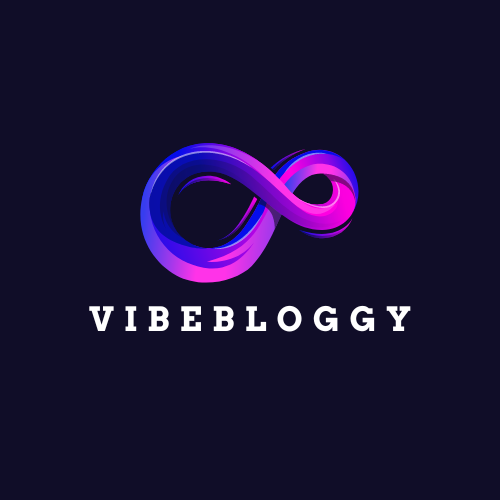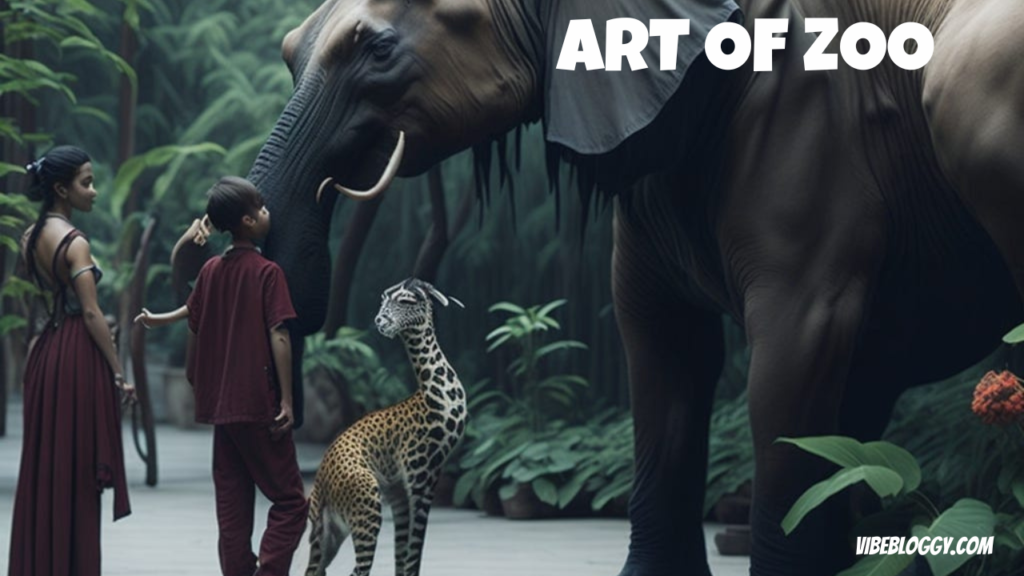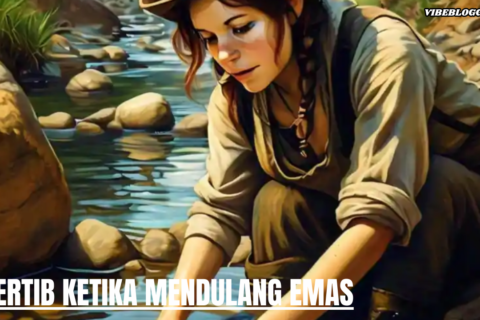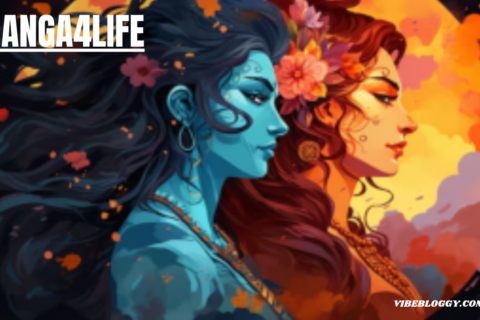Introduction
The “Art of Zoo” is a highly controversial term that primarily refers to a sub-genre of animal pornography, often involving explicit content where humans engage in sexual acts with animals. This practice, considered illegal and unethical in many countries, has sparked intense debates regarding animal rights and societal norms. Despite its taboo nature, a niche community exists that perpetuates this content, leading to significant discussions about the implications of such practices on both individuals and society at large. Recently, the term has gained notoriety on social media platforms like TikTok, where users often react to the shocking nature of the content associated with it, further fueling public interest and concern about its moral and legal ramifications.
The Art of Zoo: A Unique Blend of Nature and Creativity
The art of zoo involves creating visual representations of animals in their natural environments. It draws inspiration from the incredible diversity of wildlife that exists on Earth, portraying the majesty of animals while often emphasizing their connection to the environment. This form of art can be traced back to ancient times when early humans depicted animals on cave walls, symbolizing their reverence for nature and wildlife.
Today, zoo art continues to evolve, encompassing traditional forms like painting and sculpture as well as modern expressions like digital illustration and photography. The ability to showcase the raw beauty of wildlife in artistic form has made this genre a key element of modern art culture.
The Evolution of Wildlife Art: From Ancient Cave Paintings to Modern Masterpieces
The depiction of animals in art goes back millennia. Early humans found themselves in awe of the creatures that shared their world, and as a result, they sought to immortalize them through rudimentary sketches and carvings.
Cave Paintings: The Earliest Forms of Animal Art
One of the oldest examples of zoo art comes from the Paleolithic era, where cave paintings in locations like Lascaux and Altamira depict bison, horses, and deer. These prehistoric artists used primitive tools and natural pigments to create their works. Their paintings not only reflected their surroundings but also told stories of survival, hunting, and human interaction with nature.
Cave art was not just decorative. It likely had a ritualistic or spiritual purpose, representing animals as powerful symbols of life, strength, and survival.
Medieval Manuscripts: Animals in Religious Contexts
Fast forward to the Middle Ages, where animals played a key role in religious manuscripts and iconography. Artists of the medieval period often incorporated animals into their illustrations to symbolize various moral lessons or virtues. Creatures like lions, eagles, and lambs were frequently used in religious texts to represent nobility, courage, or sacrifice.
These representations helped create a sense of reverence for animals in both religious and philosophical contexts, deepening humanity’s connection to the animal kingdom.
Renaissance Art: A New Perspective on Nature
The Renaissance marked a turning point for wildlife art, as artists began to depict animals more realistically and with greater anatomical accuracy. Artists like Leonardo da Vinci took a scientific approach to their work, studying animal anatomy and movement to create lifelike renderings of horses, birds, and other creatures. The shift toward realism reflected a growing interest in nature and science during this period.
During this time, animals began to be depicted not just as symbols, but as important subjects in their own right. This set the stage for the explosion of animal-focused art in the centuries to come.
The Golden Age of Wildlife Art: Celebrating Animals in the 19th and 20th Centuries
The 19th century ushered in what many consider the golden age of wildlife art. With increasing access to the natural world through exploration and scientific discovery, artists became fascinated with animals, both familiar and exotic. This fascination led to the emergence of dedicated wildlife artists, who sought to capture the spirit of the animal kingdom in meticulous detail.
Audubon and the Rise of Ornithological Art
One of the most influential figures in this movement was John James Audubon, an American naturalist and painter. Audubon’s monumental work, “The Birds of America,” remains one of the most revered collections of ornithological art. His detailed watercolors of birds in their natural habitats combined scientific observation with artistic beauty, earning him recognition worldwide.
Audubon’s ability to merge art and science influenced generations of wildlife artists who followed. His legacy continues to inspire nature-focused artists today.
Animal Sculptures in the Industrial Age
As wildlife art expanded, so did the medium. Sculpture became a prominent form of expressing the beauty of animals. Artists like Antoine-Louis Barye, a French sculptor, became famous for his bronze animal sculptures. Barye’s works, often depicting predators like lions and tigers, captured the strength, grace, and ferocity of these majestic creatures.
The tactile nature of sculpture allowed viewers to experience animals in three dimensions, bringing them closer to understanding the essence of the wildlife depicted.
The Conservation Movement and Wildlife Art
By the 20th century, the role of wildlife art had evolved. No longer just an aesthetic pursuit, it became a vehicle for conservation and environmental activism. Artists like Robert Bateman and Carl Rungius combined their artistic talents with a passion for preserving the natural world.
Their works raised awareness about endangered species and environmental degradation, encouraging viewers to appreciate the beauty of wildlife and the need to protect it.
Modern Zoo Art: Digital Illustrations and Wildlife Photography
In today’s digital age, the art of zoo has transformed, embracing technology and new media to bring wildlife to a broader audience. Digital art and photography are now at the forefront of zoo art, offering fresh ways to capture and celebrate animals and their habitats.
Digital Art: Pushing the Boundaries of Creativity
With digital illustration tools like Adobe Photoshop and Procreate, modern artists have more creative freedom than ever before. Digital art allows for the manipulation of colors, textures, and forms in ways that traditional media could never achieve. This medium has opened new possibilities for zoo art, as artists experiment with surreal and fantastical depictions of animals.
Digital wildlife artists often use a mix of realism and imagination, creating dreamlike interpretations of nature. These works, while grounded in the natural world, push the boundaries of what is possible in visual art.
The Power of Wildlife Photography
Wildlife photography has become one of the most popular forms of modern zoo art, with professional photographers traveling the globe to capture animals in their natural habitats. National Geographic, for example, has published countless breathtaking wildlife images that have captivated audiences around the world.
Photographers like Ansel Adams, Nick Brandt, and Ami Vitale have dedicated their lives to capturing intimate moments of wildlife, highlighting both the beauty and vulnerability of the animal kingdom.
Wildlife photography also plays a critical role in conservation efforts, as these images often reveal the impact of human activity on ecosystems and species. The visual storytelling of wildlife photographers inspires action to protect endangered species and their habitats.
Techniques and Styles in Zoo Art: How Artists Bring Wildlife to Life
The art of zoo requires a variety of techniques to accurately capture the essence of animals and their environments. Artists use a wide range of mediums and styles, each bringing unique qualities to their work.
Realism: Capturing Nature as It Is
Many zoo artists strive for realism, aiming to depict animals as accurately as possible. This technique often involves careful study of the animal’s anatomy, behavior, and environment. Realist wildlife art often draws comparisons to scientific illustration, as both seek to present the subject with great detail and accuracy.
Realism requires a deep understanding of the subject. Artists like Robert Bateman have become masters of this style, using detailed brushwork to create lifelike representations of animals in their natural habitats.
Impressionism and Expressionism: The Emotional Side of Wildlife
Not all zoo art focuses on strict realism. Some artists choose to use impressionistic or expressionistic techniques, which prioritize emotion and mood over detail. Impressionist wildlife art uses loose brushstrokes and soft edges to evoke a feeling of movement or atmosphere.
Expressionism, on the other hand, uses exaggerated colors, forms, and textures to convey the artist’s emotional response to the animal. This style allows for more personal interpretation, as artists channel their feelings about wildlife into their creations.
Abstract Wildlife Art: The Essence of Animals
Abstract art offers another avenue for zoo artists. Rather than depicting animals literally, abstract artists focus on capturing the essence of the animal. This might involve distilling an animal’s shape or movement into basic forms or colors.
Abstract zoo art invites the viewer to see animals in a new way, often leading to deeper emotional connections. This style can be particularly effective in representing endangered species, as the abstract forms emphasize the fragility and impermanence of the natural world.
The Role of Zoo Art in Wildlife Conservation
The art of zoo has a profound impact on wildlife conservation efforts. As wildlife and natural habitats face increasing threats from climate change, habitat destruction, and poaching, zoo art serves as a powerful tool for raising awareness and inspiring action.
Art as a Voice for Endangered Species
Many contemporary zoo artists have turned their focus to endangered species, using their artwork to shine a light on the plight of animals at risk of extinction. Artists like Nick Brandt have made it their mission to capture the vulnerability of these animals in their artwork.
Brandt’s haunting black-and-white photographs of African wildlife draw attention to the beauty of the animals while highlighting the fragility of their existence. His work, along with that of many others, has been instrumental in sparking global conversations about conservation.
Zoo Art in Conservation Campaigns
Art has also played a key role in conservation campaigns. Organizations like WWF (World Wildlife Fund) and Panthera often collaborate with artists to create visually compelling campaigns that resonate with the public. These campaigns use the emotional power of art to connect people with wildlife and motivate them to take action.
Zoo art has the ability to transcend language and cultural barriers, making it an ideal medium for global conservation efforts.
Conclusion
The art of zoo continues to captivate audiences with its stunning depictions of wildlife. From ancient cave paintings to modern digital creations, artists have long been inspired by the beauty and complexity of the animal kingdom. As zoo art evolves, it not only celebrates the wonders of nature but also plays a vital role in promoting conservation efforts. By connecting people with animals through art, we can foster a deeper appreciation for the natural world and inspire action to protect it for future generations.
Also Read: SSIS-816: Optimizing ETL in SQL Server Integration Services
FAQs
What is the art of zoo?
The art of zoo refers to artistic representations of animals and wildlife, encompassing various mediums such as painting, sculpture, digital art, and photography.
How does zoo art benefit wildlife conservation?
Zoo art raises awareness about endangered species and environmental issues, inspiring people to engage in conservation efforts.
Who are some famous zoo artists?
Famous zoo artists include John James Audubon, Robert Bateman, and Nick Brandt, all of whom have made significant contributions to wildlife art and conservation.
What mediums are used in zoo art?
Zoo art can be created using various mediums, including oil painting, watercolor, sculpture, digital illustration, and photography.
Why is realism important in wildlife art?
Realism allows artists to accurately depict animals and their environments, making the artwork more relatable and informative, especially for educational and conservation purposes.
How has digital art influenced modern zoo art?
Digital art has expanded creative possibilities, allowing artists to experiment with new styles and techniques that push the boundaries of traditional wildlife art.






